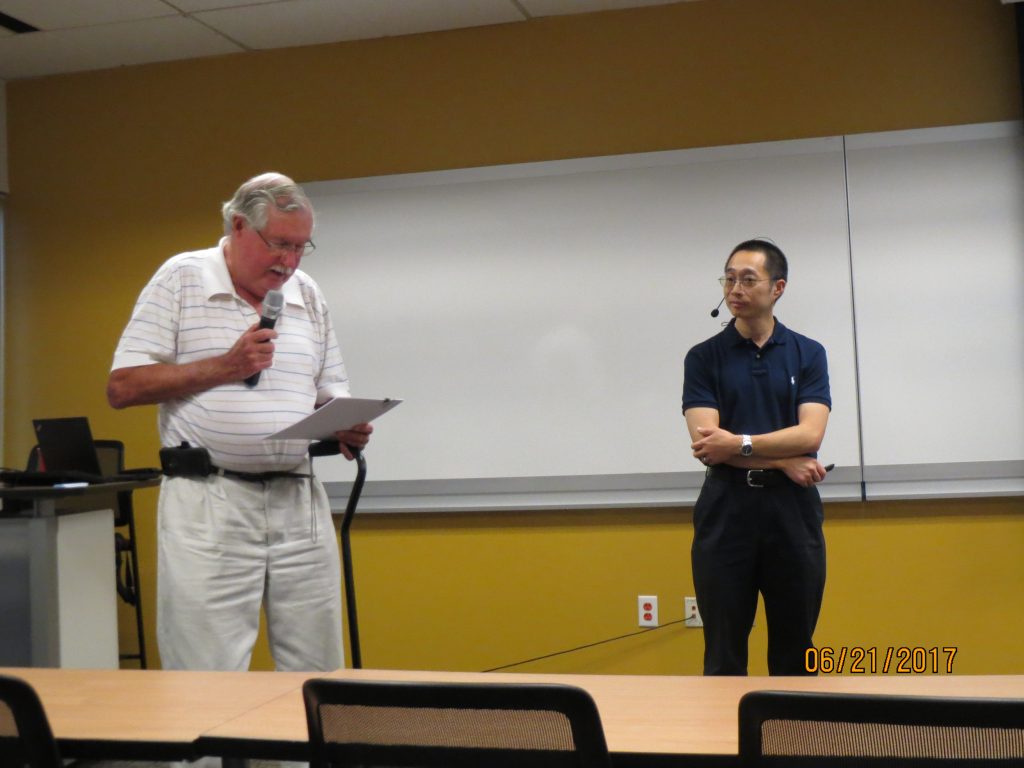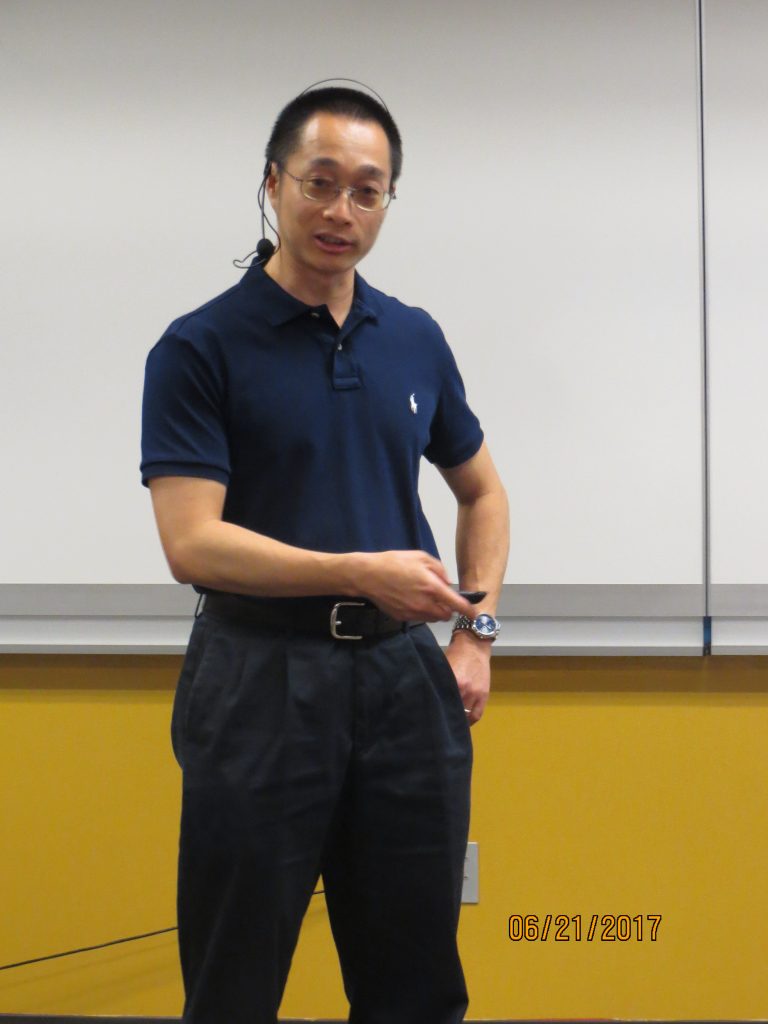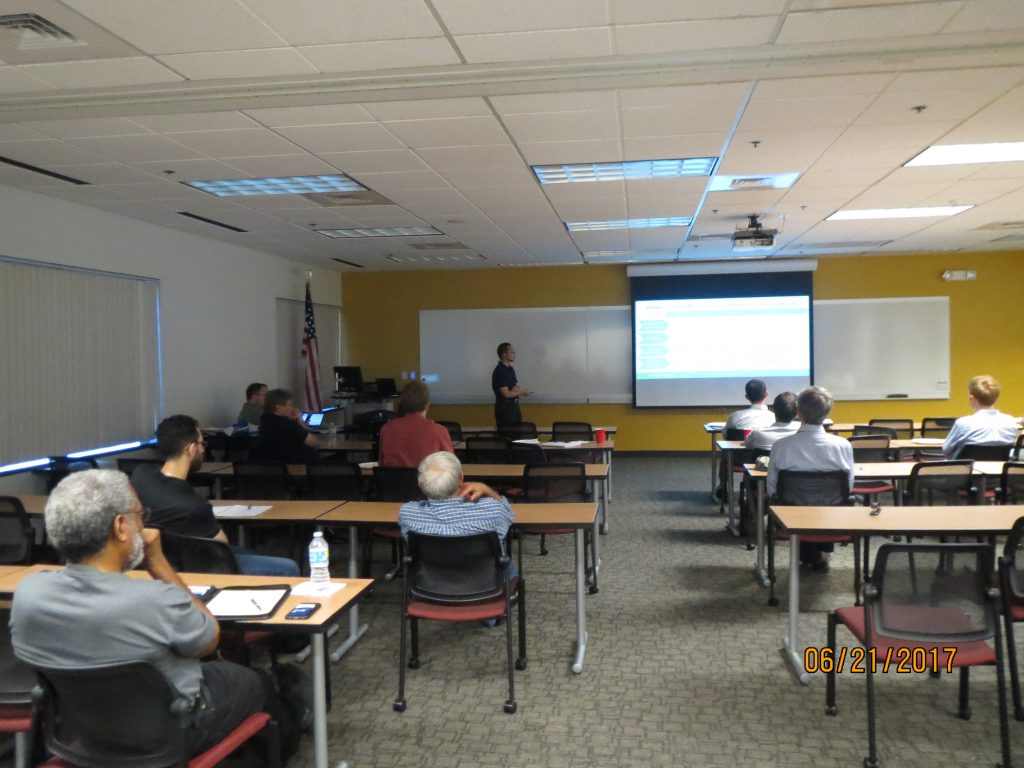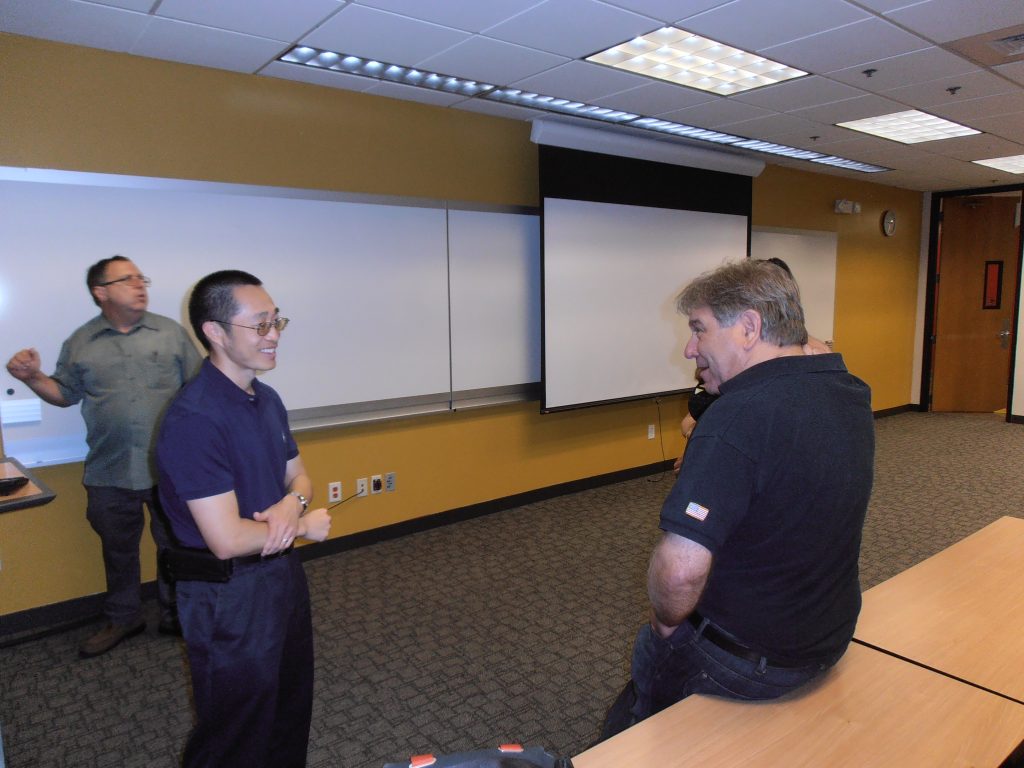COMSOC “5G”—WHAT, HOW AND WHERE—-FOOTHILL MEETING JUNE 21, 2017
| July 3, 2017 | Posted by Frank Gomez under CN, COMSOC, CS, MTT/APS |
Comments off
|
On June 21, 2017 IEEE COMSOC Distinguished Lecturer Dr Liangping Ma, from the IEEE San Diego Section, came to the IEEE Foothill Section. The title of his talk was ”5G—Technologies and Standards”. For some of our IEEE Foothill members it was an introduction to 5G; for others an update and review.
How did we get to this point today where we are considering 5G? We started with the 1G phone handset circa 1980 era. This handset weighed 2 lbs and cost about $4K. Do you remember Motorola and the IRRIDIUM satellite system?
Next were the 2Gand 3G phones (such as the clam-shell-like Motorola Razr and the BLACKBERRY) and now the current 4G LTE (Long Term Evolution, such as the iPhone series).These communication devices started out as just a compact, moveable wireless phone, but evolved into a camera, a GPS locator system, a music storage and playback device, and a video display device able to download videos via Internet connectivity. Now a new vision is coming for personal communications called “5G”—not just a phone, camera, and numerous Apps, but a control system for the Internet of Things, autonomous autos and myriad other applications. Your imagination—and the ability to integrate it into a functioning algorithmic “system on a chip” may be the limit.
To start looking at what 5G is , our speaker described the large scale systems engineering efforts underway in terms of four main areas: USE CASES and potential Services; the SPECTRUM and the need for a broader bandwidth to process all the desired information; ADVANCES IN RADIO TECHNOLOGY, signal processing, and multiple antennas for wider area coverage; and new NETWORK TOPOLOGIES to mesh Macro cells with localized small cells.
A simplified, but useful way, to consider the key performance requirements is to draw a large triangle. The three vertices are labeled Enhanced Mobile BroadBand (eMBB); Ultra Reliable and Low Latency Communications (UBLLC); and Machine Massive Type Communications (mMTC). Within this framework, multiple teams are developing requirements and matching them with proposed specifications. Within the area of this triangle, the requirement can be plotted in terms of weighting toward the partial satisfaction of each of the three vertices. Naturally there are going to be tradeoffs, so the ground stations and associated user equipment will trend to more complete satisfaction of one of these vertices first. Later, the others will be tackled. (Just think: this 5G effort is attempting to reorder the communications systems of the world.)
Equally important in considering these requirements are the timelines needed. Timelines for 5G were presented and discussed in terms of the programmatic 3GPP standardizations milestone dates, New Radio Development for 5G, including Radio Access Network (RAN) and Core Network and Non Access Stratum; and Systems architecture.
As an example of the large-scale, and international in scope, 5G systems engineering effort occurring now, Dr Ma proceeded into the main part of his talk. This tracked the efforts he is currently following; specifically Radio Access Network (RAN) Working Group 1, which stands for Radio Layer 1in the architecture.
We now had an expert presentation on several key technical areas: waveforms, MIMO antenna development, channel coding for error detection, and numerology and frame structure for all the message words and control words necessary for the 5G system to work. It was a guided tour of one part (RAN1) of the current 3GPP specifications. What technical areas are being explored? For example, Dr Ma gave a quick look at channel coding for error reduction: LPDC and polar codes. With respect to MIMO, can you image the engineering effort required to turn a 64 antenna base station, each with an array of two dimensional phase shifters, into a functioning system.
An overview case study of a potential remote medical surgery via a 5G link was presented. Assuming some parameters for such a surgery, what would be an acceptable image frame rate and image delay / latency?
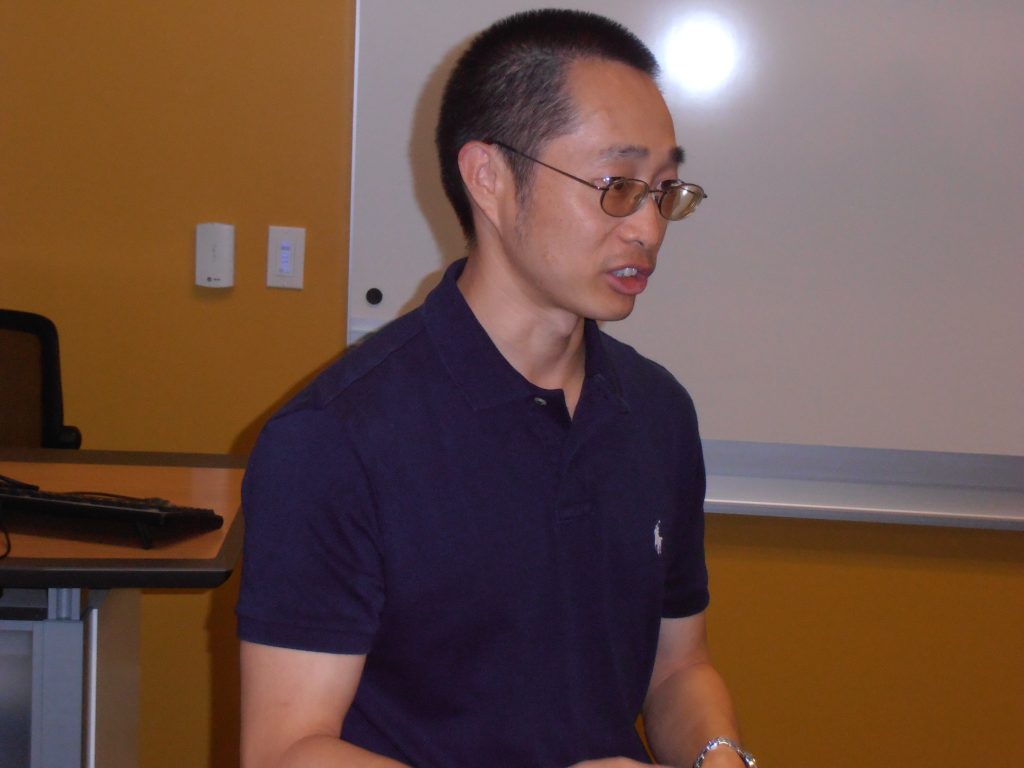
We describe how the 5G PRGs, specifically RAN WG1, are set up within the 3GPP systems engineering structure
Dr Ma handled a variety of other questions during the Q&A session. What set of requirements (as referenced to the three vertex requirements triangle, will be most-promptly addressed, as seen from his current perspective on the 5G program? What vertex set of specifications is most critical? Is there some event / date when there will be most likely be the first large-scale demonstration of 5G? (Possibly the 2020 Olympics from Tokyo?) Many current wireless / communication companies are broadcasting such an event , with their choice made in line with their company’s marketing goals, in truly flamboyant marketing language.
Dr Ma was most generous with his time in addressing post-meeting questions from individual members from our IEEE COMSOC chapter. We thank Dr Liangping Ma for delivering his IEEE COMSOC Distinguished Lecture to our IEEE Foothill Chapter. To be noted: this presentation and followup Q& A session lasted over 2 and 1/2 hours.
This was the second stop of Dr Ma’s DL tour. (He lectured at IEEE Buenaventura, IEEE Foothill, IEEE Coastal Los Angeles, and IEEE San Fernando Valley Sections in that order.) We also thank IEEE COMSOC Headquarters for their partial sponsorship of this tour.
Addendum:
Slides: Link
Audio: Link
